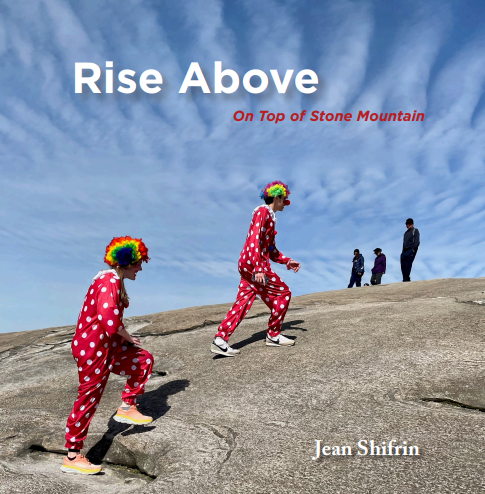What happens when a place known for division becomes a canvas for connection? On the summit of Georgia’s Stone Mountain, etched with the figures of Confederate generals and shadowed by a painful past, photographer Jean Shifrin found something heartwarming. A montage of humanity. A rising chorus of joy, reflection, movement, and healing.
For more than a decade, Shifrin hiked the one-mile trail to the top of the largest exposed granite rock in the world. With only her iPhone in hand, she became a humble witness to the small, profound moments that unfold when people gather in open sky: children leaping over crevices, yoga teachers saluting the sun, monks in saffron robes soaking in stillness, and families wrapped in love and laughter.
This was not the Stone Mountain that history books often reference. It wasn’t the Stone Mountain of public controversy or televised protests. It was rather a beautiful sight.
A New Kind of Monument
In Rise Above: On Top of Stone Mountain, Shifrin assembles these images like visual poetry. Her photographs look like meditative snapshots of life as it is lived when no one is watching. Here are some snippets:
Two boxers spar beside a frame of pigeons mid-flight.
A Buddhist monk meets the gaze of the mountain with calm reverence.
A soldier hikes upward, carrying the weight of memory and an American flag.
Kites and feathers echo across pages, reminding us that joy can be both grounded and soaring.
Through thoughtful sequencing and intentional juxtapositions, Shifrin reframes the summit not as a relic of a fractured past, but as a breathing ground for hope. Where others saw a site frozen in time, she saw motion, color, voice.
Photography as Reclamation
The brilliance of Rise Above lies in its simplicity. It doesn’t shout, but it influences your mindset through photography. Shifrin uses a tool that every one of us already carries: a smartphone. By blending in with her phone, she captures without disrupting. By using what is accessible, she democratizes the act of witnessing.
Her work doesn’t erase Stone Mountain’s complicated legacy—it rises above it. Each photo becomes an act of reclamation, proving that art can transform a place not by rewriting its history, but by revealing its present truth.
At the top of the mountain, there are no pedestals, no plaques. There is only sun-warmed rock, a 360-degree view, and the hum of life in all its variation. And it is there that Shifrin’s art breathes not in grand statements, but in barefoot walks, in farewell gatherings, in a girl with a telescope peering into tomorrow.
A Collective Climb
Stone Mountain has always loomed large, both physically and symbolically. But for the people Jean Shifrin photographs, it turns into a ritual, a shared breath between strangers. The hike is a pilgrimage, and the summit a space to reflect, to move, to play, to grieve, to create.
In this way, the book serves as a reminder that no place is beyond transformation when people gather with openness, movement, and intent. That legacy isn’t just carved in stone—it is lived upon.
Reclaiming the summit doesn’t always begin with protest. Sometimes, it begins with a lens, a climb, and the courage to see things from a different perspective.
 WhatsApp Us Now
WhatsApp Us Now









